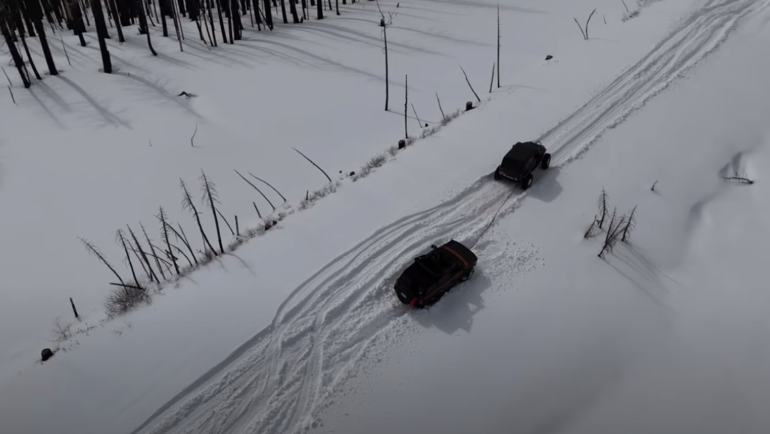
INEOS Grenadier – High, Low and Locked?
The INEOS Grenadier has a four position transfer case which is rare these days, but has taken some owners by surprise.

The modes are:
- High Range – centre diff unlocked
- High Range – centre diff locked
- Low Range – centre diff unlocked
- Low Range – centre diff locked
The ‘centre diff’ is a clever bunch of cogs called a ‘differential’. In this case the differential sits between the front and rear axles, more or less central to the vehicle, allowing both the front and rear axles to be driven but at different speeds.
In very brief, you lock the centre diff for offroad use, and unlock it for onroad use. Many modern 4x4s have systems which do this automagically hiding the complexity of the centre diff and removing the need for the driver to even think about whether it’s locked or not. Why lock and unlock? When the centre diff is locked, you’ll get better traction offroad but because the front and rear axles are force to turn at the same speed, you’ll damage the transmission through ‘windup’ if you operate the car on high traction surfaces. That’s fully explained here:
Then we have High Range and Low Range. High Range is the ‘normal’ set of gears, just like any roadcar. Low range is a crawler set of gears, 2.5 times lower than high range so third and fourth low range feel like second low in high range, a bit like the big cogs connected to the pedals of a bicycle. Here’s a gear overlap diagram:

So, which of the four modes do you use when? Here’s some principles for those new to 4x4s:
- Do not lock the centre diff on high traction surfaces such as bitumen, even when wet. The 4×4 traction aids are designed for offroad use and can be dangerous to use on normal roads. The Grenadier has an all-wheel-drive system – that’s with centre diff unlocked driving all four wheels – and that does a great job of delivering traction on roads.
- Lock the centre diff when offroad, which is defined as anything other than a bitumen road – sand, mud, dirt, rocks, grass etc. The vehicle will perform more effectively, and there is no risk of transmission windup as the front and rear axles can slip a little.
- Consider unlocked CDL if risk of surface damage with no traction loss e.g. driving slowly around a grassy campsite, in which case there’s no concern about traction, and the front and rear axles slipping will damage the grass a little.
- Low range if speeds under 40km/h for a close-ratio gearbox; better to have 6-8 gears available to you in low range than be changing between first and second, or slipping the torque convertor. Don’t be part of the “oh I made it without engaging low range” crowd – it’s not kind to the track or your car.
- ALWAYS lock the centre diff on offroad hills!
Here’s a summary table using those principles as a guide for beginners. Red cross means never, green tick yes/preferred, orange circle maybe if needs be, not usually done but no harm in it.

Some notes:
- Experience has shown me that locking the centre diff in high range on fast (40-80km/h) rough roads is advantageous for traction, even if the car could manage without, and in some vehicles there is less wear in the centre diff. I suspect but don’t know for sure if that’d be the same for the Grenadier.
- Generally for trailer manoeuvring you’re not offroad, but if you are, then lock the centre. If you’re not, then low range unlocked can offer greater control and less stress on the car if you’re backing something heavy up a hill.
- Bitumen covered in ice is offroad, so I’d lock the centre diff. However, if it’s a case of very low speed work on the flat, say a carpark covered in snow, then unlocking the centre diff may make sense as locking it slightly increases turning radius. There would be no risk of windup in such slippery conditions.
- Most Australians drive 4x4s that lock the centre diff when low range is engaged, so may not realise that isn’t automatic on the Grenadier, or are used to part-time 4WD systems where there is no centre diff. You should brief any Aussie that drives your car. This is less of a problem in the UK where most people are used to older Defenders and Discoverys which had the same four-position transfer case.
This summary has been made by one of my Patreons, Michael Hamilton, and is a good overview of Grenadier offroad aids, not just the locking centre diff:

Watch this for an explanation of the centre diff dangers on hills:
This article covers the “but we don’t need to lock” in more detail.


